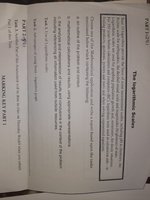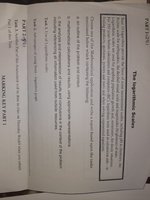You are using an out of date browser. It may not display this or other websites correctly.
You should upgrade or use an alternative browser.
You should upgrade or use an alternative browser.
Application of logaritm
- Thread starter Aa2
- Start date
Dr.Peterson
Elite Member
- Joined
- Nov 12, 2017
- Messages
- 16,059
Search for some of the terms they mention (pH, Richter, decibel, ...), or for the term "logarithmic scale". Then pick something that interests you.Hello there,
Could you help me in finding similar reports on the internet
I hope you aren't asking for a report you can plagiarize, but just for sources of information about the topics.
Dr.Peterson
Elite Member
- Joined
- Nov 12, 2017
- Messages
- 16,059
What have you found?thank you so much, No I am just asking for sources related to decible scale and its correlation with the semi log
By the way, it's "decibel", and knowing the spelling is highly relevant to understanding what it means!
Dr.Peterson
Elite Member
- Joined
- Nov 12, 2017
- Messages
- 16,059
I'm not sure what that even means. And I don't see those points listed as requirements in the assignment.I am not able to find two things first What are the limitations of decibel scale and what are the improvents?
topsquark
Senior Member
- Joined
- Aug 27, 2012
- Messages
- 2,269
A scale is a scale. How can it have "limitations?" I don't know what you are reaching for here.I am not able to find two things first What are the limitations of decibel scale and what are the improvents?
-Dan
Dr.Peterson
Elite Member
- Joined
- Nov 12, 2017
- Messages
- 16,059
One possible answer would be that there aren't any! Perhaps some scales have limitations and others don't. Of course, if the assignment doesn't mention limitations, then you wouldn't be expected to mention that there are no limitations if there aren't any.Thank you Dr. Peterson,
I asked my teacher to provide me with the marking key to ensure that I am in the right track. and the limitation is part from it.
Can you have negative decibels? Are there sounds that can't be measured in decibels? That's the sort of thing I'd be looking for.
Cubist
Senior Member
- Joined
- Oct 29, 2019
- Messages
- 1,666
@Aa2 try to find out if the decibel scale could represent a perfect silence ( no sound at all - which would be MUCH quieter than we could hear. Note: a perfect silence might not be possible in real life, there will probably always be some atoms around that can produce some kind of pressure variation - as far as I'm aware I don't think a perfect vacuum is possible. )
I believe that cubist has the right of it. There is some level of sound that represents 0 decibels.
Whether there is a complete absence of sound as a physical reality, the least sound that our instruments can detect will have a negative but finite number of decibels. All that we can ever say about an absence of measurable sound is that it is less than the least decibel our instrument can detect.
Whether there is a complete absence of sound as a physical reality, the least sound that our instruments can detect will have a negative but finite number of decibels. All that we can ever say about an absence of measurable sound is that it is less than the least decibel our instrument can detect.
Cubist
Senior Member
- Joined
- Oct 29, 2019
- Messages
- 1,666
...I'll give some extra info! I was thinking of a peculiar feature of logarithmic scales. They can't actually represent the complete absence of something! With sound this would correspond to writing -∞ dB. And infinity isn't a proper number. The decibel scale has been set so that the minimum sound level that the average human can hear is 0dB. There are probably animals that have more sensitive hearing, so they could detect, say, -10dB.
With the decibel scale, for every (approximate) 10dB increase in noise level - humans, on average, would perceive a doubling of the loudness. (Obviously -10dB corresponds to a perceived halving of the volume). This doesn't reflect the physics, since if you precisely double the sound pressure waves this gives a different amount of decibels that you ADD (not multiply).
Therefore, because we subtract a few decibels every time we reduce a sound level by a certain factor, say 1/2, this means that we can never get to an amount of decibels that represents the complete absence of sound! If we keep halving the sound level there will still be some sound remaining, so we can halve forever. Therefore we can also keep subtracting from a decibel amount forever, never reaching pure silence.
Hope this makes sense. I'm writing this in a bit of a rush today. (I remember this stuff from some of my electronics classes!).
With the decibel scale, for every (approximate) 10dB increase in noise level - humans, on average, would perceive a doubling of the loudness. (Obviously -10dB corresponds to a perceived halving of the volume). This doesn't reflect the physics, since if you precisely double the sound pressure waves this gives a different amount of decibels that you ADD (not multiply).
Therefore, because we subtract a few decibels every time we reduce a sound level by a certain factor, say 1/2, this means that we can never get to an amount of decibels that represents the complete absence of sound! If we keep halving the sound level there will still be some sound remaining, so we can halve forever. Therefore we can also keep subtracting from a decibel amount forever, never reaching pure silence.
Hope this makes sense. I'm writing this in a bit of a rush today. (I remember this stuff from some of my electronics classes!).


